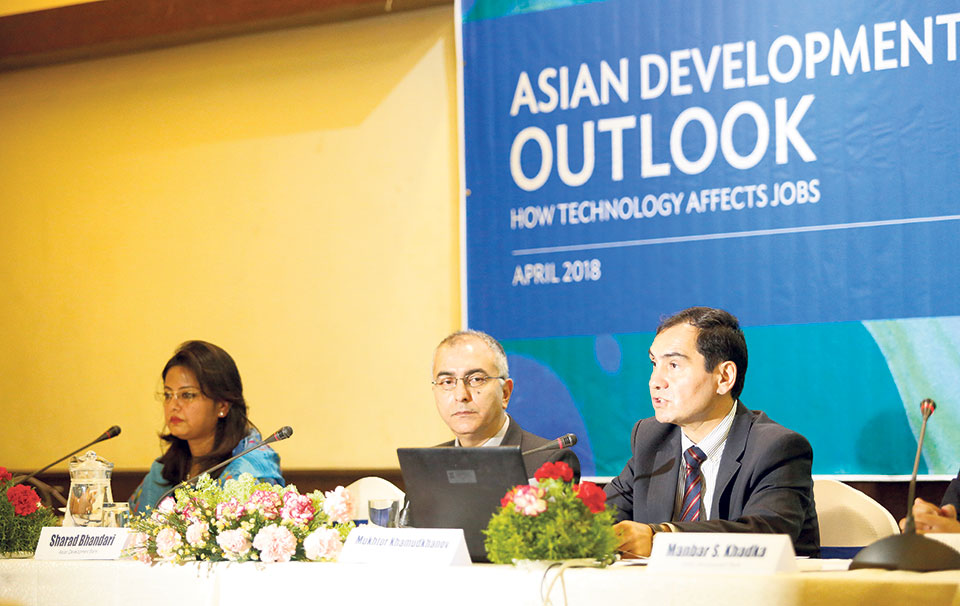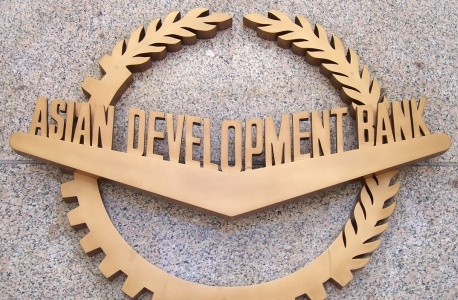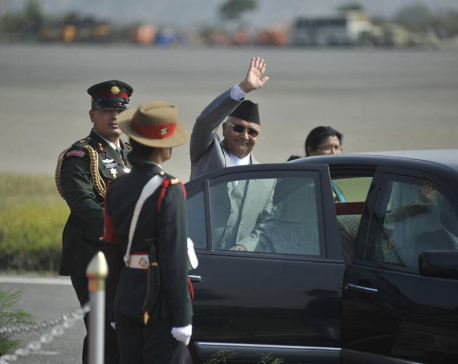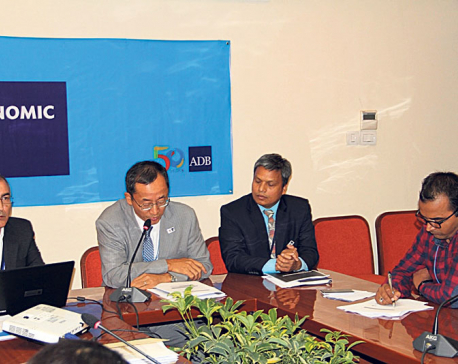
OR
ADB anticipates 4.9 percent growth for Nepal
Published On: April 11, 2018 03:04 PM NPT By: Republica | @RepublicaNepal

While lower than govt target, the forecast is slightly higher than ADB's previous forecast
KATHMANDU, April 12: Asian Development Bank (ADB) has said that Nepal's economy is anticipated to grow by 4.9 percent in the FY2017/18, down from 6.9 percent of economic growth a year ago.
Releasing the Asian Development Outlook on Wednesday, the Manila-based multilateral lender attributed the slower growth rate to floods of August 2017 and 'the erosion of base effect'.
By saying the erosion of base effect, the ADB was referring to higher-than-average growth in FY2016/17 following the earthquakes of 2015 which slid the growth rate to the level slightly higher than 0 percent.
The growth forecast, however, is somewhat an optimistic tone for Nepal's economic outlook from the ADB if compared to its previous forecast for the current fiscal year. In its Nepal's Macroeconomic Update, the ADB revised the growth forecast slightly upward from 4.7 percent of the growth forecast that it made in its Macroeconomic Update 2017 made public in September last year.
The ADB's growth forecast is far lower than the growth target for the current fiscal year set by the government. Through the mid-term review of budget for FY2017/18, the Ministry of Finance said that the country will achieve 6 percent growth in the current fiscal year, down by 1.2 percentage points from the initial target.
"There is somewhat better-than-expected [agricultural] harvest despite floods in August last year," said Manbar S Khadka, explaining the reason behind the slight-upward revision on the ADB's own earlier forecast.
According to the ADB's macroeconomic update, agriculture sector is likely to grow by 3 percent in the current fiscal year, down from the growth of 5.3 percent in the previous fiscal year.
Toward manufacturing sector, the growth is also likely to be depressed even though capacity utilization of industries has improved significantly in recent time on account of increased electricity supply, according to the ADB report.
"Despite enhanced capacity utilization, industrial growth in this fiscal year is set to be lower from the high growth of 2017.This is mainly due to the low investment in manufacturing sub-sector for years, owing to political instability and structural bottlenecks," added Khadka.
The services sector will, however, remain buoyant given the expansion of wholesale and retail trade, financial intermediation and travel and tourism sub-sectors, according to the report.
ADB said that the construction needs, particularly for establishing provincial and local governments, the acceleration of post-earthquake reconstruction, and planned disbursement of relief grants to earthquake victims will also induce growth.
The government has apportioned fiscal transfer of Rs 232.2 billion, or nearly 8 percent of GDP, to local and provincial governments under the new federal structure.
INFLATION TO RISE MODERATELY
The ADB has also said that the average annual inflation is expected to rise moderately to 5.5 percent in the current fiscal year from 4.5 percent in FY2016/17.
The inflation forecast is, however, still below the inflation target of 7 percent set by the Nepal Rastra Bank.
Inflation as of mid-February moderated on the back of modest oil prices, ease in the supply of goods, and subdued inflation in India -- the major trading partner to whose currency the Nepali rupee is pegged, according to the ADB report.
You May Like This

ADB forecasts 4.7 percent economic growth for Nepal
KATHMANDU, Sept 27: Asian Development Bank (ADB) has forecast the Nepali economy to grow only by 4.7 percent in Fiscal Year... Read More...

What Nepal needs is India's friendship and support for growth: Nepal PM Oli
In an exclusive interview to The Hindu, Mr. Oli says the bitterness of past relations have been put behind them,... Read More...

ADB projects 4.8 percent economic growth for 2016/17
KATHMANDU, Sept 17: Asian Development Bank (ADB) has projected the economy to grow by 4.8 percent -- due to continued normalization... Read More...




Just In
- MoHP cautions docs working in govt hospitals not to work in private ones
- Over 400,000 tourists visited Mustang by road last year
- 19 hydropower projects to be showcased at investment summit
- Global oil and gold prices surge as Israel retaliates against Iran
- Sajha Yatayat cancels CEO appointment process for lack of candidates
- Govt padlocks Nepal Scouts’ property illegally occupied by NC lawmaker Deepak Khadka
- FWEAN meets with President Paudel to solicit support for women entrepreneurship
- Koshi provincial assembly passes resolution motion calling for special session by majority votes







_20220508065243.jpg)






Leave A Comment